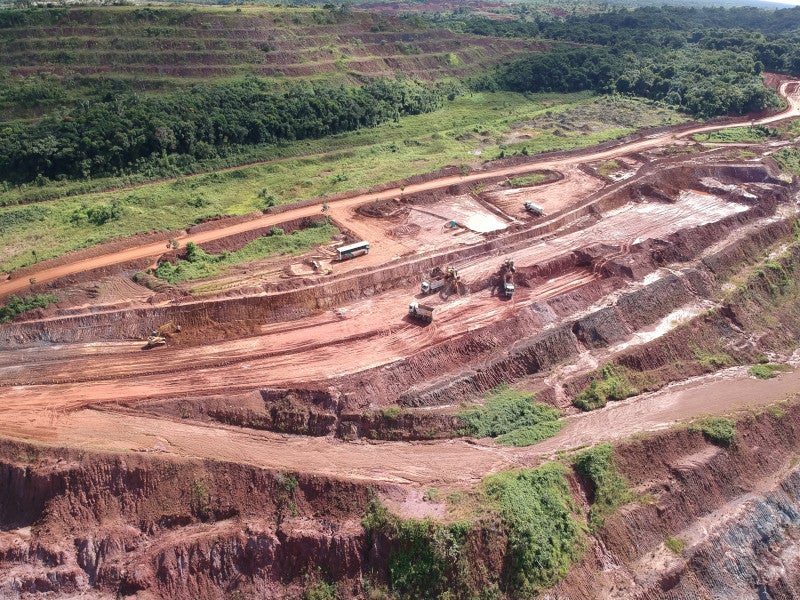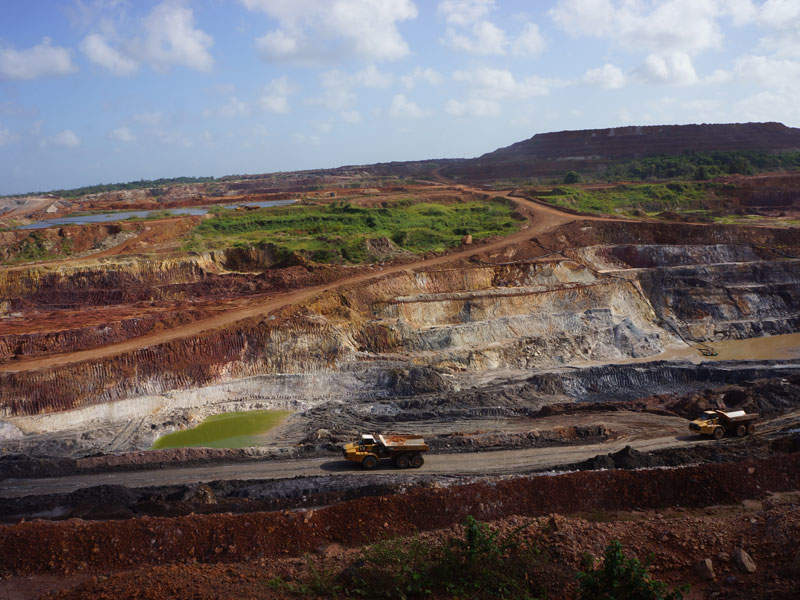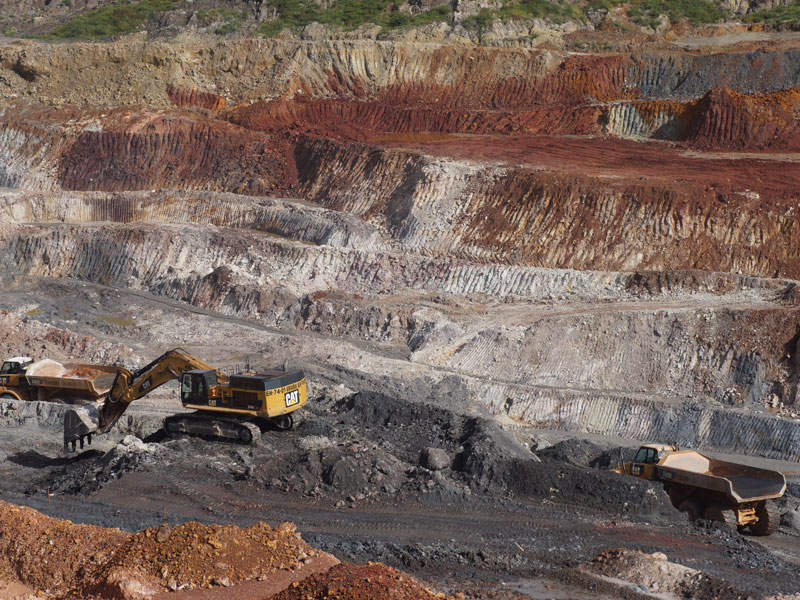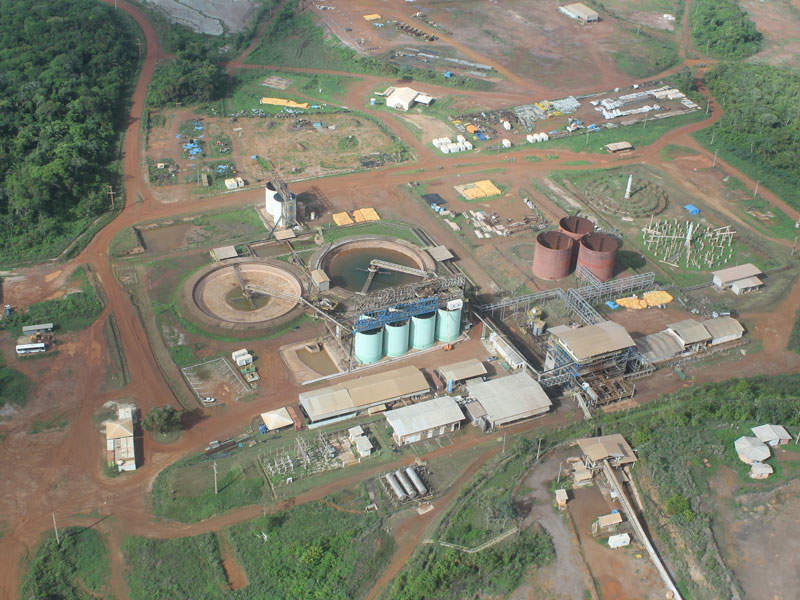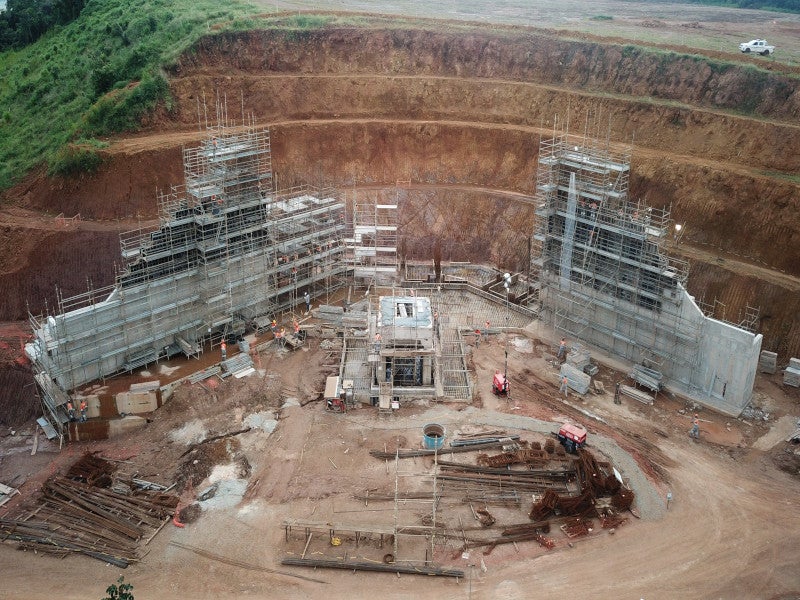The Aurizona gold mine is an open-pit development in Maranhao, northeastern Brazil.
The mine is fully owned by Equinox Gold and has been in production since 2019. The project’s feasibility study for the open pit mine was completed in July 2017.
Equinox Gold is planning to expand the mine to include underground mining. A pre-feasibility study for the expansion of the mine was completed in September 2021.
The expansion is estimated to extend the mine’s life to 11 years, with an average annual production of 137,000oz of gold.
Aurizona gold mine location
The Aurizona mine is located in northeastern Brazil between the cities of Sao Luis and Belemnear. It lies near Godofredo Viana, Maranhao, and within 3km of an Atlantic Ocean inlet.
Geology and mineralisation of Aurizona project
The region surrounding the Aurizona project is predominantly underpinned by the Paleoproterozoic Sao Luis Craton (SLC) and the Gurupi Belt, which are locally overlain by Neoproterozoic-Cambrian sedimentary rocks and intersected by early Cambrian dykes.
The mineralisation on the property is characterised by orogenic gold deposits, commonly associated with quartz diorite and feldspar quartz diorite units within brittle-ductile structures.
The gold occurrences within the project area encompass the Piaba, Boa Esperança, Tatajuba, and Genipapo deposits, in addition to the Mestre Chico and Micote prospects.
Reserves at Aurizona mine
The project is estimated to contain proven and probable reserves of 32.33 million tonnes (mt) grading 1.6g/t gold and 1.66 million ounces (moz) in contained metal, as of September 2021.
Open pit mining method at Aurizona gold mine
A conventional open-pit mining method, involving truck and excavator/front-end loaders, is applied at the Aurizona gold mine.
The mining area includes five open pits: Piaba, Piaba East, Boa Esperança, Tatajuba, and Genipapo. Once mining is complete, the Boa Esperança pit is slated to be repurposed as a freshwater storage facility.
The design of the ramp accommodates trucks with an operating width of 6.7m, resulting in a single-lane access width of 18.9m and a double-lane width of 25.6m. The overall strip ratio is 3.75:1.
The Piaba and Piaba East pits are currently operational, supplying ore to the carbon-in-leach (CIL) processing plant. Piaba East, a single-phase pit, is anticipated to be exhausted by the end of 2024.
Mining operations at the Piaba pit are set to continue until 2032, covering the remaining four phases of the design, as well as the crown pillar at the base, following the completion of underground mining.
Underground expansion at Aurizona project
The proposed underground mining will be carried out using longitudinal open-stoping that retreats to central access.
The mine will be developed along a total strike length of 2.3km and will extend beneath the Piaba open pit.
In the location where stope widths are less than 8m, longhole open-stoping with permanent rib pillars will be employed. Conversely, for stopes exceeding 8m in width, longhole open-stoping with cemented rockfill will be utilised.
Access to the underground mining area beneath the Piaba open pit will be via a portal situated in fresh rock at the pit’s western extremity. The main ramp is planned to be a single decline for the initial 735m, where it will intersect with the main return ventilation raise and the utilidor/emergency exit.
The sub-level spacing will be set at 23m, except for the two levels situated directly beneath the Piaba open pit, which will have a sub-level spacing of 29.5m. It is planned for underground and open pit mining operations to proceed concurrently.
The underground mining will advance through a succession of mining zones, employing an overhand sequence. It is proposed to install sill pillars between the upper and lower sections of mining zones 5 and 6, permitting the mining of the upper part of each zone to commence first.
The underground mining fleet will comprise highway trucks, drill jumbos, longhole drills, slot raise borers, and load-haul-dump (LHD) machines.
Ore processing
Run-of-mine (ROM) ore undergoes primary crushing in a jaw crusher, after which the crushed ore, along with the undersized material from the vibrating screen, will be transported to the semi-autogenous grinding (SAG) feed surge bin.
The grinding circuit comprises a SAG mill and a ball mill, with the former in open circuit with pebble recycling. The ball mill operates in a closed circuit with cyclones. A gravity concentration circuit recovers coarse gold particles from a portion of the cyclone underflow.
The SAG mill discharge is screened and directed to the cyclone feed pump box and further channelled to pre-leach thickening. The thickener underflow is fed to the CIL circuit.
An automated Acacia reactor facilitates the leaching of gravity concentrates using a cyanide and sodium hydroxide solution. Subsequently, the pregnant solution undergoes treatment in the electrowinning cells.
The carbon loaded with gold is further processed in the carbon stripping circuit, while the leach residue from the final tank is sent to a carbon safety screen to reclaim fine carbon. The loaded carbon undergoes acid washing and elution, with gold recovery occurring through electrowinning.
The resulting gold sludge is filtered, amalgamated with fluxes, and smelted to produce the final doré bars.
Site infrastructure
Year-round road access is available from Belem and Sao Luís, the state capital cities of Para and Maranhao, located 300km due west and 215km south-east of the project area, respectively. The property is accessed via a regularly maintained laterite road, 16km from the town of Godofredo Viana, which is connected by state highways MA-101 and MA-206 to BR-316.
The regional utility, Companhia Energetica do Maranhao (CEMAR), provides a 15MW power supply via a 69kV overhead power line to an outdoor substation located adjacent to the process plant.
Raw water is sourced as reclaimed water from the tailings storage facility (TSF) in combination with other local freshwater sources.
Contractors involved
U&M Mineraçao e Construçao was awarded the mining contract for the Aurizona gold mine in March 2018.
Engineering consultant Lycopodium Minerals (Canada) conducted the pre-feasibility and feasibility studies for the mine.
Mining consultancy companies SRK Consulting (Canada), BVP Engenharia/Walm Engenharia e Tecnologia Ambiental (BVP/Walm), and AGP Mining Consultants provided input to Lycopodium for the pre-feasibility study.
The engineering, procurement and construction management (EPCM) contract for the mine was awarded to Ausenco Engineering (Canada).
AGP Mining Consultant, with the help of Equity Exploration Consultants and Knight Piesold, prepared the expansion pre-feasibility study.

